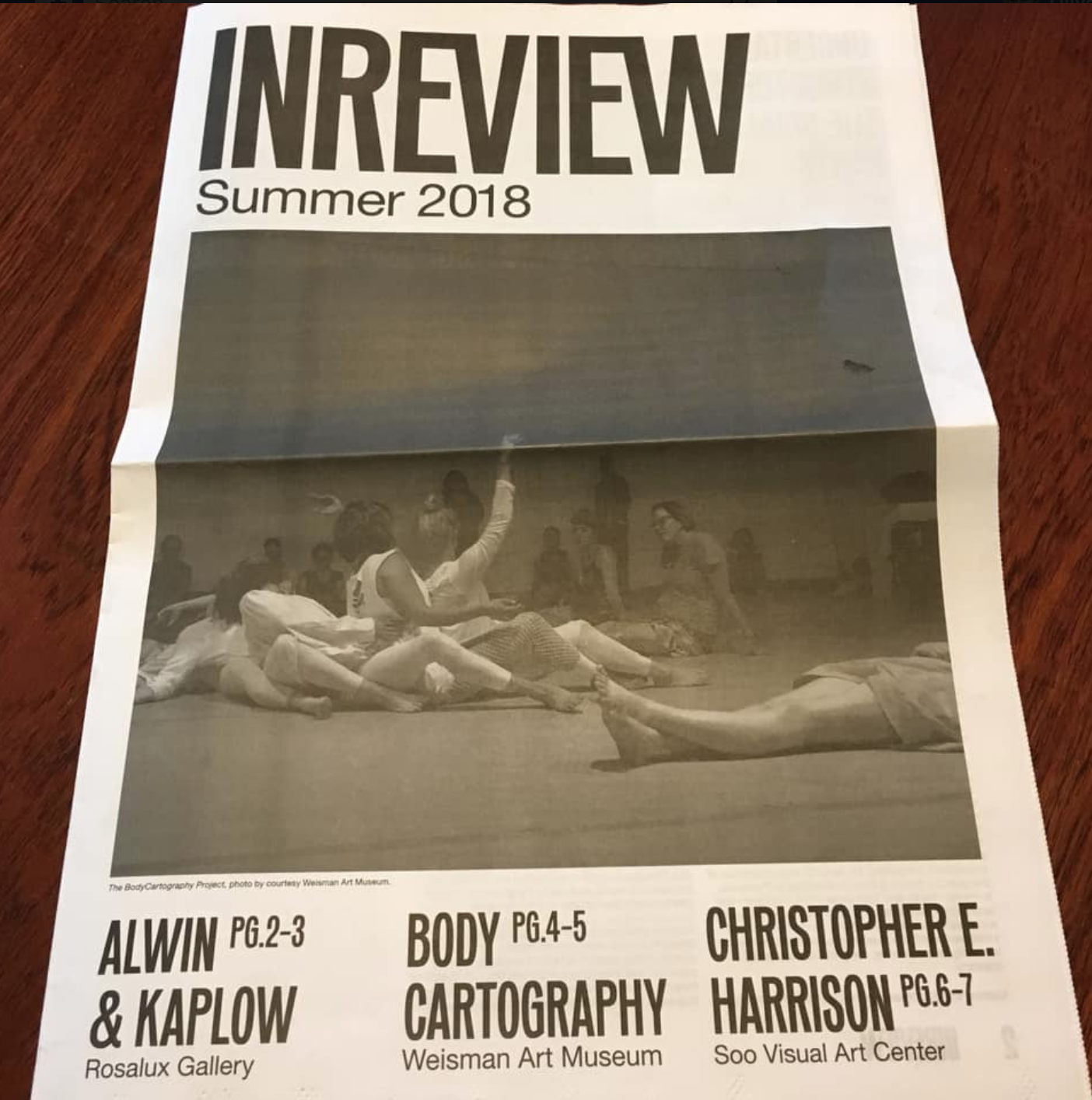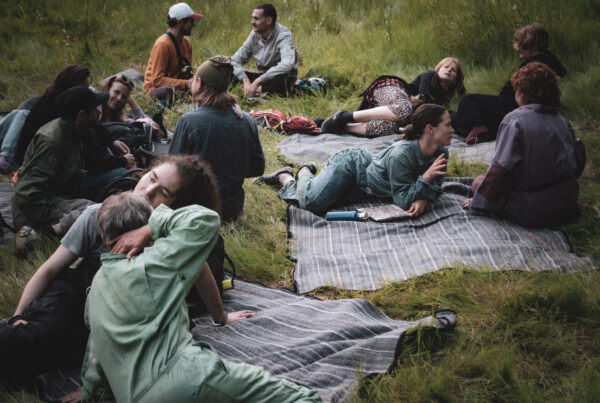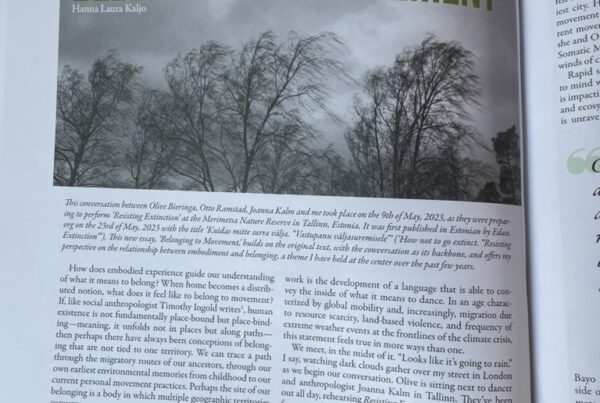Damon Stanek
August 2018
Dance is an affective immigrant into the art museum. Olive Bieringa and Otto Ramstad’s collaborative dance company, BodyCartography Project, just completed a five week residency at the Weisman Art Museum, inspiring questions of attention and focus as they dissolved the space between performer and viewer, thereby asking us to reflect upon the figurative phrase: “that work touched me”.
At the core of the project was a series of collaborative workshops with the dancers and medical students entitled “The Place of Space” Embryonic, both conceptually and symbolically, it exploited our art gallery habits and sought to build a relationship between art and science. As Bieringa noted in her artist talk: “Duration is a privilege that exists in the museum.” This was my first encounter with their work and I joined the audience at the edge of the dance-floor. The five dancers wearing red, yellow or blue were distributed – I groups of two or three- among correspondingly colored blankets on the floor. As the piece commenced, one of the students began to periodically call our biological terms: morphogenesis, cardiogensis, looping, folding, migrating, neurogenesis. The dancers improvised, in laconic arcs of action, keeping two or three points of contact with their partners. Slowly they migrated across the floor, cleaving and extending off individually. What disturbed me about the work was the manner art had relinquished its power to science. I left the first performance reflecting upon society’s elevation of science as a discourse of truth and authority.
By a simple twist of fate, I saw a second performance. An announcement precede it declaring the medical students would be calling interpretations of what they were she was seeing. This pulled the work inside out for me, art was the grounding discourse, rather than science. In this way, dance was fostering an ethical encounter, rather than falling into the trappings of morality. Very subtle, maybe even fragile, these encounters relied upon the privileged duration of the museum.
As I marveled at the sense of grace their silent motion conveyed, two intertwined dancers moved toward me. Feeling protected, outside the border of the marley, I was surprised as they rolled across the imaginary border making gentle contact with me. This simple touch changed how I was thinking about the work – as did Olive Bieringa’s swaddling each audience member in a blanket. I was not witnessing a series of bodily representations of neurogenesis, but rather the sense of becoming that is involved with the biological processes as the duration unfolded.
This project is a prototype version of the museum of fluid spaces



